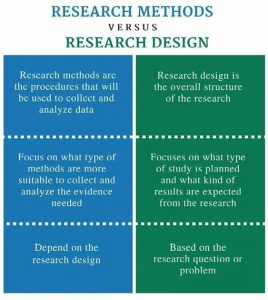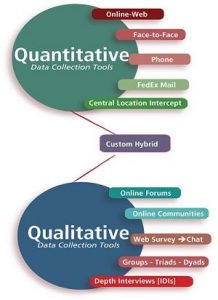The nursing research paper methodology, often referred to as the "backbone" of the research, is the cornerstone of a compelling and impactful study. It's the section where you meticulously detail how you'll conduct your research, ensuring clarity, reproducibility, and ultimately, validity of your findings.
This guide will equip you with the tools and knowledge to craft a robust and well-structured nursing research paper methodology that sets the stage for impactful research.
The Essence of a Nursing Research Paper Methodology
At its core, the nursing research paper methodology explains the "how" of your research. It meticulously outlines the specific procedures, techniques, and tools you'll employ to gather, analyze, and interpret data. This section needs to be written with exceptional clarity and precision, allowing readers to grasp the rationale behind each methodological choice and understand how your research design contributes to answering your research question.
The methodology section of a research paper is crucial for several reasons:
- Transparency and Reproducibility:
- Explains how the research was conducted: This section provides a detailed account of the methods used to collect and analyze data, allowing readers to understand the research process and its limitations.
- Enables replication: A clear methodology allows other researchers to replicate the study, validating or challenging the findings.
- Validity and Reliability:
- Justifies the chosen methods: The researcher explains why specific methods were chosen and how they are appropriate for the research question and objectives. This helps establish the validity and reliability of the findings.
- Addresses potential biases: By outlining the methods and data analysis techniques, the researcher can address potential biases and limitations inherent in the study.
- Credibility and Trust:
- Demonstrates rigor: A well-structured methodology section showcases the researcher's understanding of research methods and their commitment to conducting rigorous research.
- Builds trust with the reader: By being transparent and detailed in the methodology, the researcher builds trust with the reader, making the findings more believable and impactful.
- Understanding the Findings:
- Contextualizes the results: The methodology provides context for interpreting the research findings. Readers understand the limitations and strengths of the methods used, allowing for informed interpretations of the data.
- Identifies areas for future research: By highlighting the methodology's limitations, the section can suggest areas for future research and improvement.
In summary, a strong methodology section:
- Ensures transparency and reproducibility.
- Establishes validity and reliability of findings.
- Enhances credibility and trust in the research.
- Provides context for understanding and interpreting results.
Without a clear and well-written methodology section, the research paper is less valuable, less credible, and less impactful. It is a cornerstone for scientific inquiry and the dissemination of knowledge.

Key Components of a Nursing Research Paper Methodology
A well-structured nursing research paper methodology typically consists of several essential components:
- Research Design:
The research design forms the foundation of your study, outlining the overarching approach you'll take to investigate your research question. It's akin to the architectural blueprint of your research, guiding your data collection and analysis process. Common research designs in nursing include:
- Quantitative: This design focuses on collecting numerical data to test hypotheses and establish relationships between variables. Examples include experimental, quasi-experimental, and correlational designs.
- Qualitative: This approach explores subjective experiences and perspectives, often using methods like interviews, focus groups, and observations to gather rich, descriptive data.
- Mixed Methods: This design combines both quantitative and qualitative approaches, offering a more comprehensive understanding of the research topic.

- Participants/Subjects:
This section describes the characteristics of the individuals participating in your study. It's crucial to clearly define your target population, sampling strategy (e.g., random, convenience, purposive), and the inclusion and exclusion criteria used to select participants. Remember, ethical considerations and informed consent are paramount in any nursing research study.
- Data Collection Instruments and Procedures:

Here, you detail the specific tools and methods employed to gather data. This section should be comprehensive and transparent, allowing other researchers to replicate your study. Examples of data collection instruments include:
- Questionnaires: Structured surveys used to collect quantitative data.
- Interviews: Semi-structured or unstructured conversations to collect qualitative data.
- Observations: Systematic recordings of behaviors or events.
- Physiological Measurements: Using medical devices to collect objective data.
- Data Analysis Techniques:
This section outlines the statistical or qualitative techniques you'll use to analyze the collected data. Depending on your research design, you may use statistical software packages (e.g., SPSS, R) or qualitative analysis techniques (e.g., thematic analysis, grounded theory). Ensure you provide sufficient detail about the specific tests or analyses you'll conduct.
- Ethical Considerations:
Ethics are fundamental in nursing research. This section outlines the measures taken to protect the rights and well-being of participants. It should address key ethical principles:
- Informed Consent: Ensuring participants understand the risks and benefits of the study before agreeing to participate.
- Confidentiality and Privacy: Safeguarding participant information from unauthorized access.
- Beneficence: Ensuring that the research benefits outweigh any potential risks to participants.
- Justice: Fair and equitable treatment of all participants.
Writing a Strong Nursing Research Paper Methodology: Tips and Strategies
- Clarity and Precision:
Your nursing research paper methodology should be written with exceptional clarity and precision, making it easy for readers to understand the "how" of your research. Use precise language and avoid technical jargon that might be unfamiliar to readers.
- Justification for Methodological Choices:
Clearly explain why you selected each methodological component. Justify your chosen research design, sampling strategy, data collection instruments, and analysis techniques based on relevant literature and the specific aims of your study.
- Transparency and Reproducibility:
Provide sufficient detail for other researchers to replicate your study. Include specific instructions for data collection and analysis, ensuring your methodology is transparent and reproducible.
- Addressing Potential Biases:
Acknowledge and address potential sources of bias in your methodology. Explain how you will mitigate these biases to ensure the validity and reliability of your findings.
- Flow and Logical Structure:
Ensure a smooth flow and logical structure in your methodology section. Clearly connect each component to the overall research design and the research question you're trying to answer. Check out samples of well-crafted research papers from academic platforms such as
Nursing Papers to review the logical structure and flow of ideas in the methodology section.
- Use of Visual Aids:
Consider incorporating visual aids such as tables, figures, and diagrams to enhance clarity and reader comprehension. These elements can help illustrate complex procedures or data collection methods.
- Citations and References:
Support your methodological choices with relevant literature. Cite credible sources that justify your decisions and provide evidence for the effectiveness and validity of your methods.
- Proofreading and Editing:
Thoroughly proofread and edit your nursing research paper methodology for any grammatical errors, typos, or inconsistencies. This attention to detail will ensure your methodology is clear, professional, and credible.
Examples of Nursing Research Paper Methodology Sections
Example 1: Quantitative Research Design
Research Design: A randomized controlled trial (RCT) will be used to assess the effectiveness of a new intervention for reducing anxiety in hospitalized patients with chronic obstructive pulmonary disease (COPD).
Participants: A sample of 100 patients diagnosed with COPD will be recruited from two hospitals. Participants will be randomly assigned to either the intervention group (n=50) or the control group (n=50). Inclusion criteria will include: (a) age 18 years or older, (b) diagnosis of COPD, and (c) presence of anxiety symptoms as measured by the Hamilton Anxiety Rating Scale (HAM-A).
Data Collection Instruments: The HAM-A will be administered at baseline, immediately post-intervention, and at 1-month follow-up.
Data Analysis Techniques: Paired t-tests will be used to compare changes in anxiety scores between the intervention and control groups over time.
Example 2: Qualitative Research Design
Research Design: A qualitative phenomenological approach will be used to explore the lived experiences of nurses providing end-of-life care in critical care settings.
Common Pitfalls in Writing a Nursing Research Paper Methodology
The methodology section of a nursing research paper is crucial for establishing the credibility and rigor of your study. It outlines the specific procedures used to collect and analyze data. However, researchers often fall into common pitfalls that can weaken the quality of their work. Here are some common pitfalls and how to avoid them:
- Lack of Clear and Concise Explanation:
- Pitfall: Vague or insufficiently detailed descriptions of methods, leaving the reader unclear about how the research was conducted.
- Solution: Provide a clear and concise explanation of every step in the research process. Use precise language and ensure your explanations are readily understood by readers familiar with nursing research paper methodology.
- Inadequate Justification for Method Choice:
- Pitfall: Failing to explain why specific methods were chosen, making the methodology appear arbitrary.
- Solution: Provide strong justification for the chosen research design, data collection methods, and analysis techniques. Explain how they align with the research question and contribute to answering it. This ensures that readers understand the rationale behind your nursing research paper methodology.
- Insufficient Detail on Data Collection:
- Pitfall: Overly simplistic or incomplete descriptions of data collection procedures, leaving out crucial information.
- Solution: Clearly describe the data collection process, including specific instruments, sampling procedures, and any ethical considerations. Provide a detailed explanation of how the data was gathered, ensuring readers understand the nuances of your nursing research paper methodology.

- Unclear Data Analysis Approach:
- Pitfall: Vague descriptions of data analysis techniques, leaving readers unsure about how the data was interpreted.
- Solution: Clearly outline the chosen data analysis methods, including software used, statistical tests performed, and any specific procedures employed. This provides transparency and allows readers to evaluate the validity of your nursing research paper methodology.
- Lack of Consideration for Ethical Considerations:
- Pitfall: Insufficient attention to ethical considerations related to participant recruitment, data collection, and data storage.
- Solution: Explicitly address ethical considerations related to your study, including informed consent procedures, data confidentiality, and participant safety. This is essential for ensuring the ethical integrity of your nursing research paper methodology.
- Overlooking Potential Bias:
- Pitfall: Failing to address potential biases in the research design, data collection, or analysis.
- Solution: Acknowledge and address potential sources of bias throughout the nursing research paper methodology. This demonstrates your awareness of potential limitations and strengthens the credibility of your findings.
By avoiding these common pitfalls, you can ensure that your nursing research paper methodology is clear, well-justified, and contributes to the rigorous and ethical conduct of your research.
Professional Nursing Research Paper Methodology Help
Writing an engaging nursing research paper methodology section can be an overwhelming task. However, you can easily avoid the stress with professional nursing research paper methodology help from
Academia Scholars. We offer the best research paper writing services for all academic levels including undergraduate, Degree, Master’s and even PhD. Besides research papers, we can also assist you in writing compelling
nursing essays, case studies and
dissertations.


 Here, you detail the specific tools and methods employed to gather data. This section should be comprehensive and transparent, allowing other researchers to replicate your study. Examples of data collection instruments include:
Here, you detail the specific tools and methods employed to gather data. This section should be comprehensive and transparent, allowing other researchers to replicate your study. Examples of data collection instruments include:
